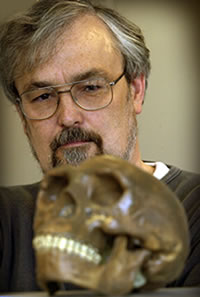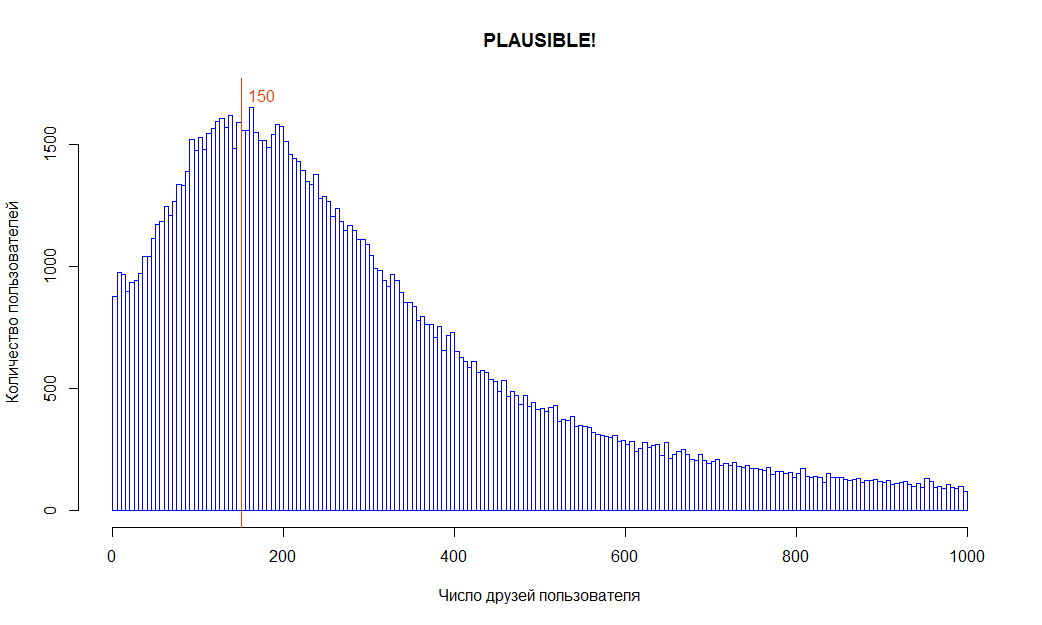Dunbar number and VK users
 I recently came across such an amazing thing like the Dunbar number.
I recently came across such an amazing thing like the Dunbar number. The story is like that. More than 20 years ago, when the expression “British scientists” was not yet a meme, the anthropologist Robin Dunbar, studying the data on anthropoid apes, found that the number of their flocks obeys a certain law. There are a maximum number of pack members. If the flock grows and its number exceeds the threshold, it is divided into two. Moreover, for different species, this size limit is different.
Dunbar suggested that the matter is in social relations between members of the flock, which are well developed among monkeys (for example, the flock is divided into clicks of “close friends” that help their members in conflicts). To stick together, each monkey must know each member of its flock: who he is, in what relations he is with the rest. And the ability to process such social information is limited by the size of the brain, or rather part of it - the neocortex. After processing data for several species, Dunbar really found a correlation. And since you and I are primates, he was able to extrapolate the data to a person and received the very number of Dunbar - the maximum number of people with whom a person can maintain stable social relations . It turned out to be approximately 150 .
As happens with all the "magic numbers", as soon as it was discovered, it began to surface everywhere: in the number of tribes of primitive hunters and gatherers, in the size of ancient Roman army units, in the number of modern companies and even in the number of people to whom the average Englishman sends Christmas cards . Moreover, they began to actively use it in various fields: from designing social networks to reorganizing the tax service in Sweden.
In fact, everything is more complicated: Dunbar has several numbers for different degrees of proximity of people. But 150 is the most famous. One of the figurative definitions is “the largest number of people whom you won’t be embarrassed to get hooked if you accidentally met in a bar”. Or "the number of people you can ask for a favor, being sure that they will not refuse."
Having learned such an amazing thing, I could not help but get into it to check. Fortunately, social networks make it easy to do this, and, as claimed, research on Facebook confirmed the idea of Dunbar.
I calculated for ~ 159,000 VKontakte users the number of their friends and plotted a histogram. Of course, the number of friends is not the most accurate metric, because it does not take into account the strength of communication between people. But it is easy to get from publicly available data.
In this picture, for clarity, I cut the long “tail” of the distribution: there were individuals with the number of friends up to 10,000 (musicians, radio hosts and all kinds of lovers to post funny pictures). Indeed, it is clear that the distribution has a maximum, and it is just somewhere around 150.

And if you build a histogram separately for men and women, it turns out that men have a maximum less than women, which also coincides with the results of previous studies.

Of course, it would be interesting to use some other metric to filter out friends with whom the person does not maintain relationships. For example, see who he is chatting with in private messages or on the walls. But without the permission of the user, such information cannot be obtained. It would be possible to take other social networks and consider, for example, people's connections according to the comments in LiveJournal. But I'm afraid the abundance of bots will spoil the picture, and the community there is smaller.
It’s a little sad to realize that you can’t jump above the neocortex. But on the other hand, to find that even such an ephemeral thing like friendship obeys the very clear laws of nature - this is impressive.
A few related links:
The Dunbar Number, From the Guru of Social Networks
The ultimate brain teaser
